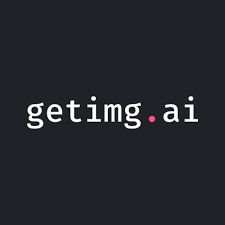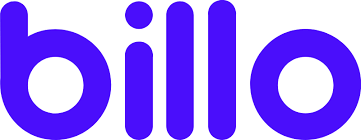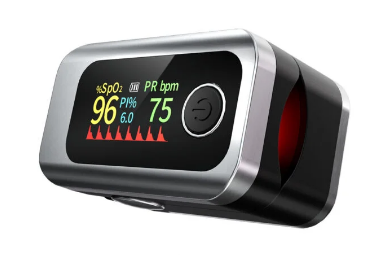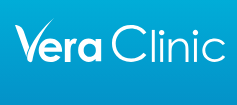O Hubstaff começa em US$ 7,00 por usuário por mês e é uma das soluções de rastreamento de tempo mais conhecidas para pequenas e médias empresas (SMB). A incorporação de uma ampla variedade de recursos de rastreamento de tempo, monitoramento de produtividade e relatórios juntamente com funções de RH, atendimento e folha de pagamento o tornou uma escolha forte para empresas que buscam uma solução eficaz que integre todas essas funções.
Por causa da mudança dramática na forma como o trabalho está sendo feito durante a crise do COVID-19, a Hubstaff viu um aumento dramático nos testes desde o início da pandemia e não necessariamente apenas para seus recursos de rastreamento de funcionários. As empresas estão interessadas nos recursos de prova de trabalho que o Hubstaff fornece, incluindo o monitoramento do tempo e das atividades dos funcionários, além de capturar capturas de tela regularmente. Mais do que gerentes verificando sua equipe, as empresas agora estão mais preocupadas em manter a produtividade após as horas de trabalho fluidas e rastrear quais ferramentas de software de negócios estão sendo usadas pelos funcionários. Isso separa as ferramentas que são eficazes daquelas que não são essenciais e valem a pena descontinuar para economizar algum dinheiro para as empresas.
Configuração e configuração
Configurar o Hubstaff é bem simples. Inscreva-se para o teste de 14 dias e você receberá um e-mail confirmando sua conta. A partir daí, é muito fácil configurar o Hubstaff de acordo com suas necessidades. Você pode escolher o tamanho do seu negócio e pode determinar seus objetivos (ou seja, monitorar a atividade da área de trabalho, facilitar a folha de pagamento, acompanhar a lucratividade de projetos e clientes ou organizar várias equipes).
Depois de configurar sua conta, você recebe um e-mail solicitando que você adicione membros da equipe aos quais são enviados e-mails próprios com links para entrar e baixar o Hubstaff em seus dispositivos para monitoramento detalhado.
Hubstaff aborda tarefas como componentes de um projeto. Isso significa que você precisa criar seu primeiro projeto para começar a definir o que rastrear. Essa abordagem pode não parecer intuitiva no início, mas faz sentido quanto mais você definir suas necessidades de controle de tempo, no entanto, se você estiver procurando por uma solução completa de gerenciamento de projetos , saiba que esse não era o objetivo de design da Hubstaff. A próxima página agora o estimula a escolher um plano, pelo qual você não será cobrado até que a avaliação expire.
Hubstaff has expanded to offer project management tracking which helps managers determine which employees are performing better than others. This information can be used to help the rest of the team improve as well as streamline workflows. This functionality brings Hubstaff closer to more versatile tools like Mavenlink and our other time tracking Editors’ Choice winner, Zoho Projects.

Pricing and Plans
Hubstaff pricing starts at $ 7.00 user per month for the Basic plan. This includes time tracking, activity levels, unlimited screenshots, payments, one integration, 24-hour support, and per-user settings. The Basic plan has user settings that can be managed on an employee-by-employee basis. You can also keep track of whether or not your employees are working by letting you record screenshots while they work as well as monitor keyboard and mouse activity during shifts.
The Premium plan, which is the tier we tested, now costs $10.00 per user per month. It features everything available in the Basic plan but also adds the ability to track apps and URLs, mobile GPS tracking, time-off and holidays, scheduling and attendance, expense tracking, invoices, payroll, client and project budgets, auto-discard idle time, timesheet approvals, daily and weekly limits, fleet tracking, and unlimited teams. This plan stands out in terms of its range of features that transcend employee monitoring into some of the major human resources (HR) applications that many small to midsize businesses (SMBs) need.
A $20.00 per user per month Enterprise plan is also available and has all the Premium features but bundles in VIP support, unlimited job sites, concierge account setup, and higher limits on public API.
Once credit card information has been inputted and the tier has been selected you get a pop-up window with a Welcome to Hubstaff package where you can either schedule a call for onboarding assistance, or watch a short video that shows you the lay of the land. The short video explains the key elements of the dashboard.
Hubstaff’s hands-on training approach helps users learn by doing, and this ensures that new subscribers can enter a step-by-step procedure that will help them get familiar fast with key functions. Once you sign up, expect to get an introductory email with various resources as well as reminder to add the email addresses of your team. Team members get an email asking them to sign up as well as install the software on their PCs.
Updated Features

Since we last tested it, Hubstaff has ramped up its map functions particularly in the mobile version of their app. It’s now possible to see team members on the map and select individuals to see where they are. It is also possible to see their routes in previous days.
There’s an option for job site notifications when team members enter or exit a set location using a geofencing feature, something that can come in handy if you’re planning some return to the office during COVID-19. There is now also integration with QuickBooks Online that makes it easier to track time in sync with running payroll. Hubstaff also allows you to set a pay rate for your team members and control how many hours they are allowed to work per week.
By setting a pay rate for a team member you can track how much you owe that team member for the time they’ve worked or even pay them automatically, which helps when dealing with contractors, freelancers, and remote workers.
Compared with TSheets, its closest competitor in our roundup, Hubstaff is reasonably priced, especially given the added monitoring features that are unavailable in many competitors’ tools. TSheets offers a basic free account, as well as a $5-per-user-per-month account that charges a $20 base fee per month for teams with fewer than 100 users, and an $100 base fee per month for teams with more than 100 users. The base fee, which Hubstaff doesn’t charge, makes TSheets slightly more expensive than Hubstaff, even at Hubstaff’s Premium level.
If you’re more interested in those bulky project management solutions, then you’ll need to pony up a bit more cash. Mavenlink charges $39 per user per month for its cheapest plan that also includes time tracking. Zoho offers its cheapest time tracking plan at $20 per month for 10 users and 10 projects (which is a decent deal if you need all of the extra PM features). The cheapest time tracking plan from Wrike costs $24.80 per user per month.

Features and User Interface
Hubstaff’s user interface (UI) is easy to figure out and very responsive. Key functionalities including the Dashboard, Activity feed, Timesheets, Reports, To-do’s, and Expenses are lined up on the left side and highlighted in gray. During the demo period, a “Get Started with Hubstaff” top navigation bar serves as a step-by-step guide to accomplish key functions (i.e. “Know what my team is working on,” “Make payroll easy,” “Track profitability,” “Organize multiple teams,” and more).
I like how it Hubstaff presents information effectively on the dashboard and organizes data on a single screen. I could see an overview of how many hours my employees have worked over the past week, their recent tasks, activity percentage, top projects, as well as a detailed list of most used apps and websites. Everything is quantified and broken down by time spent, which can give managers an instant picture of their worker’s flow and what they’ve spent their time on.
Accessing screenshots is similarly front and center. If you need this kind of deep monitoring, it is easy to get a full-resolution image of whatever was on an employees screen on any given time. Overall, This is a solid project management data visualization that lets you immediately see who is focused on their work and who is falling behind. Hubstaff can immediately call to attention projects that are getting more than enough attention and projects that are being neglected.
We invited users to join our account as members for a few of our active email addresses. Employees show up as “Members” listed in the admin view. But when we added one user for one of our active email addresses, the user still showed up under Invites but didn’t appear under Members. We received an email notification of “Outstanding Invites.” Even though we already accepted the invite for one email address, it didn’t show up in the system as accepted. We clicked the link in the email, which led to the list of invites. Then we selected Action and Resent Invite.
A Hubstaff representative told us that when we accept the invite from our other account, we need to log out of Hubstaff completely and then sign in from the other account. Once we took this step, we were able to successfully add the new member to our account and have that person track time from the separate account.
Time Management and Scheduling
There are two ways to add time in Hubstaff: You can build manual time sheets with past hours worked, or you can use the stopwatch feature. Testing the service as a worker on a separate PC, I found the stopwatch feature to be intuitive and easy to use. It floats off to the side as you do your work (in my use case this was social media management), and it served as a reminder of my time on the task as well as a reassuring method of proof that I was putting in the time to the task.
From the manager’s point of view, it is easy to get real time updates on what employees are working on, but most managers with larger teams will appreciate the daily Hubstaff emails that break down all this information in a concise and easy to read manner.
Hubstaff makes it possible to use the stopwatch button in the mobile app, desktop app, or on the website. You add a task to work on and then click the stopwatch arrow button to begin timing your work. To change tasks, click the drop-down menu in the timer widget to switch to a different task. For example for “Social media work,” we wanted to switch tasks from “Reading trending hashtags” to “Composing new scheduled tweets.” Once we changed the dropdown, the timer stopped. Then we clicked the arrow to begin the stopwatch for the new but related task.
With the time sheet feature, you log your hours as you probably did with pen and paper during the analog era of time tracking. Essentially, you work your shift, you add time to your time sheet, and you sign off on it. This is a pretty standard method of tracking time.
Unfortunately, because Hubstaff doesn’t let you add future time, you can’t use the platform as a shift planner. Administrators can let users manually edit previously submitted time sheets, and they can force users to require a reason to ensure they’re actually adding hours they worked. Admins can also remind users to start tracking time if they haven’t clocked in to the system in a while.

The native app will take a photo at random intervals of up to three shots per hour depending on how often the admin wants to keep an eye on their workers. Screenshots can be partially blurred to not record sensitive information on every grab, but enough of the screen is left unsullied that you’ll still get a sense of whether the screen is on work-related or play-related content.
The Schedules tab lets you assign dates and times for employees to work. You can set a minimum number of hours to work and a lunch break duration. Hubstaff also lets you set a recurring shift. The tool’s reporting software has improved since our last review but still trails that of more robust tools like Zoho Projects.
Hubstaff provides reports on time worked, percent of activity, and money spent. Hubstaff also has the ability to save filters for a particular search rather than searching for members separately. You can view a report on Time & Activities or reports on Weekly activity, Payments, Amount Owed, Project Budgets, Time Off Balances, Invoices, and more.
Admins receive notifications when they’ve reached weekly staffing and budget limits. Invoices are automatically calculated and created based on the time each employee worked, as well as his or her associated pay rate. You can set up automatic payroll through PayPal, which lets you automate payments based on time tracked within the tool. Keep in mind: Users don’t have to send time through for approval, so automatic payments will be made whether employees were right or wrong about the number of hours they worked. There is no reminder for managers to double-check each time sheet before automatic payments go out so, if you’re worried about making false payments, then you can set PayPal payments to manual.
As part of the configuration settings, you can control who receives alerts about a user, (management, a user, both, or no one). We think it’s smart that both management and the user would receive this. Meanwhile, when it comes to editing time, Hubstaff allows you to set a reason for editing time. Perhaps this is helpful when companies need to keep records so they don’t get audited.
Keeping Track of Employees
Hubstaff makes employee monitoring possible in a number of ways. Hubstaff’s employee monitoring features include keystroke logging, URL and application monitoring, GPS and location monitoring, and activity screenshots.
Once you set your users and they download the timer app onto their machine, the desktop app not only tracks time but will take screenshots randomly or at custom intervals, such as three screenshots per minute. This applies not only to the user’s main screen but any attached monitors as well. Hubstaff doesn’t log keys, but it does track the activity provided via the mouse and keyboard, giving employers a calculation of how active the employee is. This data all winds up on the Hubstaff dashboard in the Activity tab. This is where you can then select a user from the drop-down menu to see their screenshots correlated with activity data.
When it comes to application and URL monitoring, Hubstaff goes beyond simply tracking time to see what websites and apps employees visited or opened and how long their sessions were. The Reports module can then run custom queries on vectors such as app usage mapped against time and activity. Hubstaff integrates with leading project and task management tools such as Asana and Trello to filter reports by specific projects or tasks to track productivity.
Managers need to consider the complexity and nuance of their employees’ work routine, some tasks, like sales or support, may not take place on a computer or a keyboard since workers may be taking meetings or voice calls. It is best to calibrate expectations since Hubstaff focuses largely on PC-based activity.
One unique employee monitoring feature offered is GPS location tracking through Hubstaff’s mobile app. While the mobile app itself can’t take screenshots (the mobile device can) or capture mobile app and website activity, it lets you track and log location for employees working in the field. While the depth of monitoring data and surveillance features can’t measure up to a powerhouse tool such as Teramind, our Editors’ Choice for employee monitoring or as invasive as Veriato Cerebral, our other Editors’ choice pick which offers an even more complete view of employee activity with live recording and insider threat detection. For companies that don’t need root-level surveillance, Hubstaff has a useful selection of features for employers that want just a bit more oversight.

Good Mobile App Integration
Tracking time in real time on Hubstaff’s Android and iOS apps is exactly the same as it is on the desktop app, but the mobile app provides a particularly intuitive interface. The mobile app lets admins monitor movements via GPS tracking. Managers get an accurate overview of how much movement was done team members by capturing location data at different stages.
At first we were unable to start the timer for a task because we didn’t enable Location Services for Hubstaff. Once we clicked Allow, we were able to begin timing the project SEO Reports for XYZ Stores.
The mobile dashboard in Hubstaff was neatly organized. The organized look and feel of the desktop app is well replicated for smaller displays in the mobile versions.
When you click on an item, you can see how much money was spent based on the amount of time worked. On the main dashboard, you can track the amount of time and the cost for both individual members and a team.
The mobile interface was close to the quality of TSheets, but the latter platform has a nicely laid out time sheet with each employee separated with rules. We also like the options in the TSheets mobile app as far as Take Break, Clock In, and Clock Out. Hubstaff also has a “take a break” feature.

Improved Time Tracking and Reporting
Hubstaff is much improved when it comes to reporting features. In the past, you could add notes to an empty text filed, but now these Notes fields do appear in reports. Like most services, you can export the data in CSV or PDF format.
As hardcore as Hubstaff is about tracking work, the tool doesn’t allow for IP address restrictions, which means your employees can say they’re working from the office but they can actually be working from a cruise ship in the Bahamas (unless they’re using the mobile app to track time). This is a standard feature that’s available in almost every other tool we tested. Hubstaff also doesn’t enable admins to require users to snap a photo when they report to work.
Supomos que seja um exagero fazer alguém tirar uma selfie antes de começar a gravar sua tela e monitorar suas teclas, mas o TSheets permite que você defina isso como um requisito (o que faz sentido, especialmente se você estiver rastreando tarefas feitas fora de um computador, como como trabalho de varejo, construção ou entretenimento). O software também não permite que os usuários marquem o ponto por telefone, que é um elemento que serviços como TSheets, VeriClock e Zoho Projects disponibilizam para trabalhadores que não possuem um smartphone.
O Hubstaff também é um rastreamento de tempo fácil de administrar e rico em recursos, que se torna mais útil graças aos recursos de gerenciamento de projetos. Seu foco na produtividade faz com que valha a pena considerar para trabalhadores remotos e equipes distribuídas. Para gerentes que exigem monitoramento mais incisivo e de funcionários, a capacidade do Hubstaff de rastrear capturas de tela, sites e aplicativos é sólida. Ele fornece um panorama mais amplo de rastreamento de atividades de funcionários do que o VeriClock, que se destaca apenas no rastreamento de horas para trabalhadores remotos. Com o HubStaff, os gerentes também podem rastrear o volume de pressionamentos de tecla e roteirizar os movimentos por meio de rastreamento por GPS.
O Hubstaff é uma ótima opção de rastreamento e monitoramento de tempo para pequenas e médias empresas e pode ser dimensionado para empresas maiores, graças ao seu aplicativo flexível e à grande quantidade de personalizações. Embora seja uma comparação de recurso para recurso com a seleção do Editors’ Choice, TSheets, ainda é uma escolha sólida de plataforma de rastreamento de tempo e é definitivamente simples de configurar e entender.







